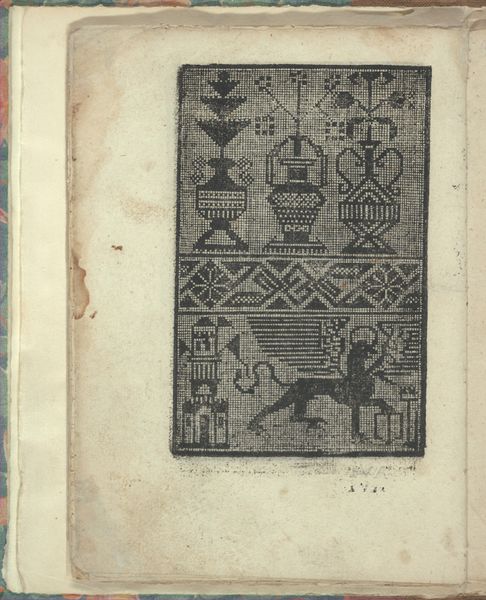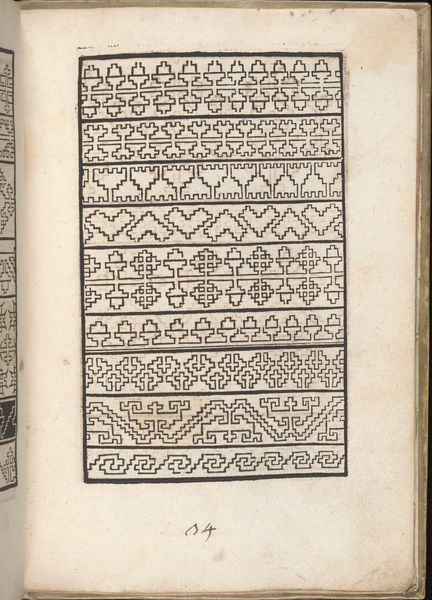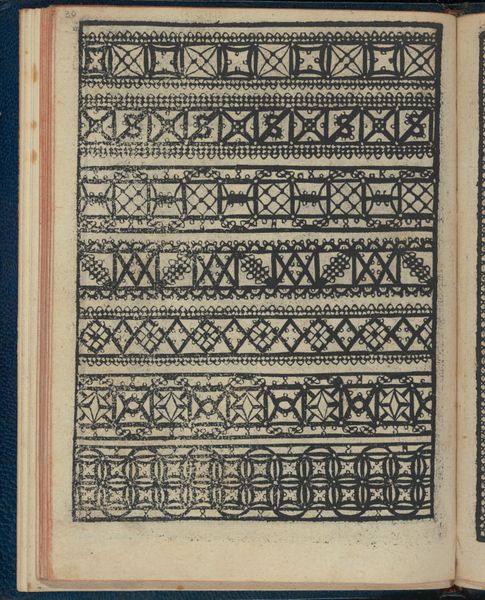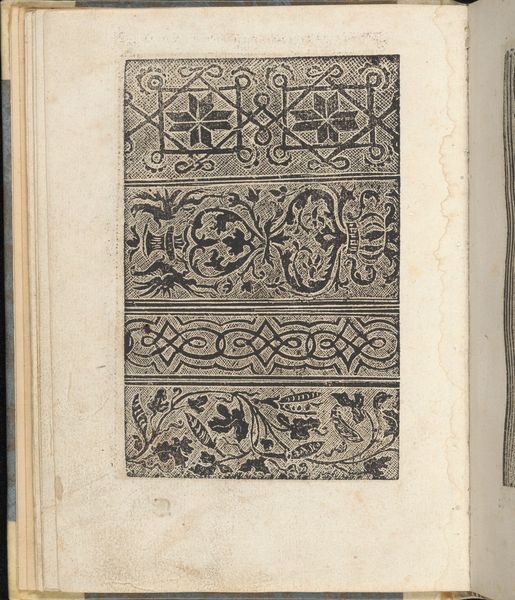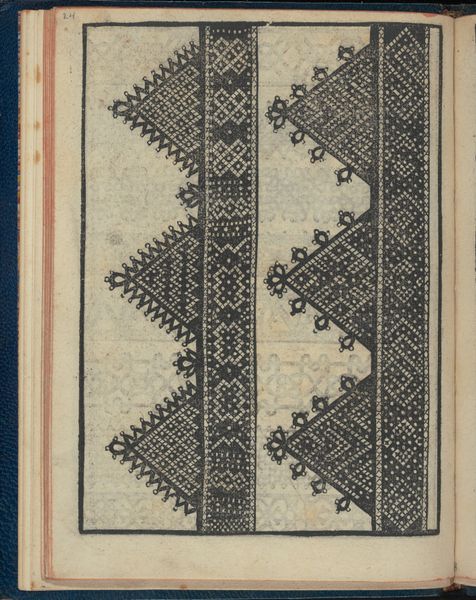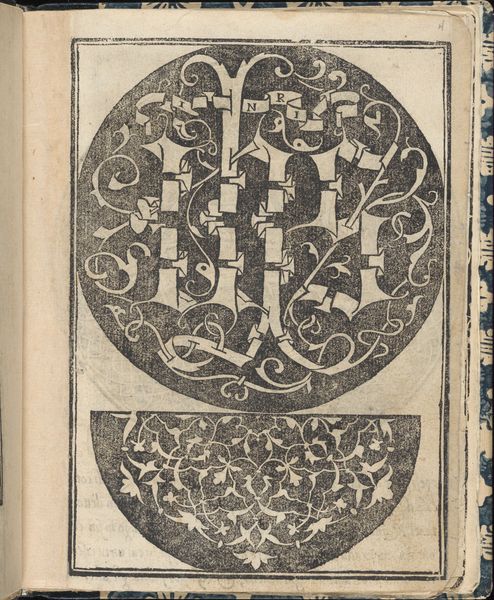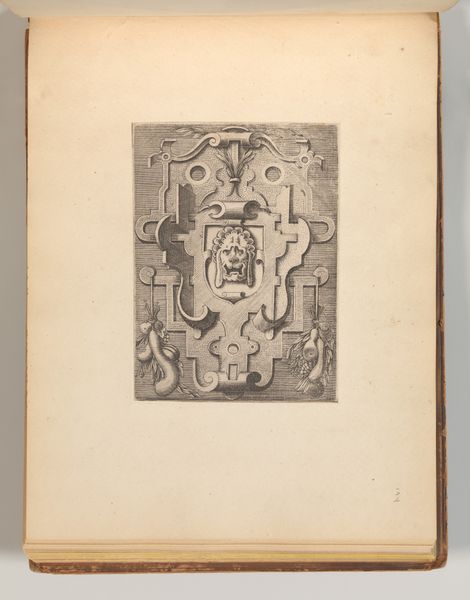
drawing, graphic-art, print, etching, paper, ink, woodcut, engraving
#
drawing
#
graphic-art
# print
#
etching
#
book
#
paper
#
11_renaissance
#
ink
#
woodcut
#
italian-renaissance
#
engraving
Dimensions: Overall: 7 13/16 x 6 3/16 x 3/8 in. (19.8 x 15.7 x 1 cm)
Copyright: Public Domain
Editor: This page, "Essempio di recammi, page 18 (verso)," comes from a book by Giovanni Antonio Tagliente, dating back to 1530. It is comprised of engravings, etchings and woodcuts on paper. I’m struck by how playful the imagery feels, like a visual game of hidden meanings. What do you see in this piece? Curator: It's fascinating, isn't it? Look at how Tagliente uses these symbolic images: the hands, the fruit pierced by a sword, even the twisting ribbons with text. These aren’t just decorative; they're emblems, meant to convey deeper moral or philosophical concepts to a 16th-century audience trained in visual literacy. Editor: Emblems... so they aren't purely aesthetic? Curator: Precisely. Each element carries a cultural memory. The hand gesture, the specific fruits—they all resonate with established symbolic meanings. Consider how the "speaking" scrolls intertwine with the images; how do they relate, do you think, to the Renaissance interest in classical learning and the revival of ancient texts? Editor: Perhaps it’s linking knowledge with visual representation, suggesting both are important? Like illustrating complex ideas? Curator: An interesting point. The relationship between the text and the image becomes a dance of understanding. What happens if you remove one? Does the message fall apart or become something entirely new? Editor: That's a really good question. It feels like both image and word together create a riddle, and part of the Renaissance pastime would be figuring it out! Thank you for helping to look closer and dig into the historical context; it's definitely added depth. Curator: My pleasure. Remembering these symbols connect us to the past, understanding their context connects us to the present.
Comments
No comments
Be the first to comment and join the conversation on the ultimate creative platform.
